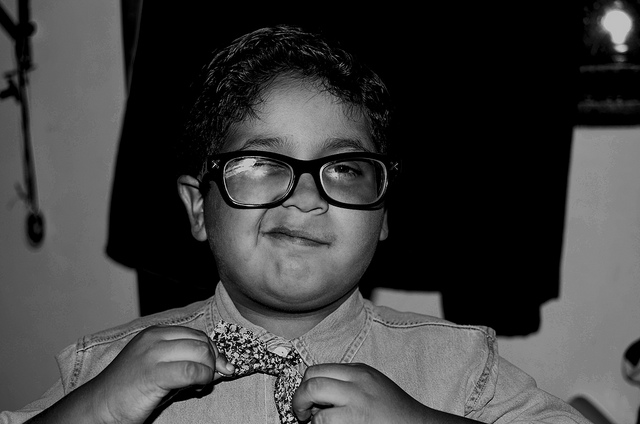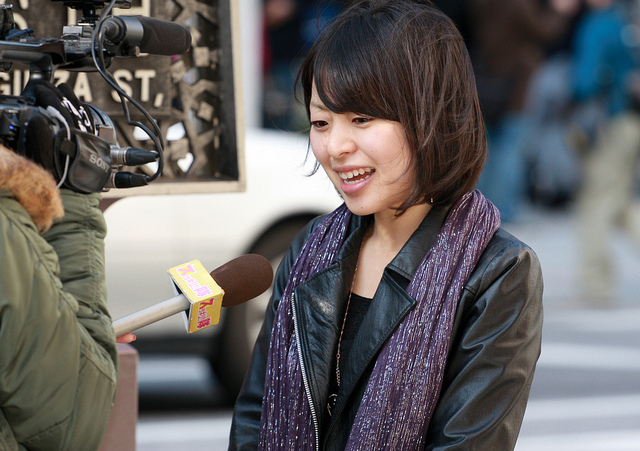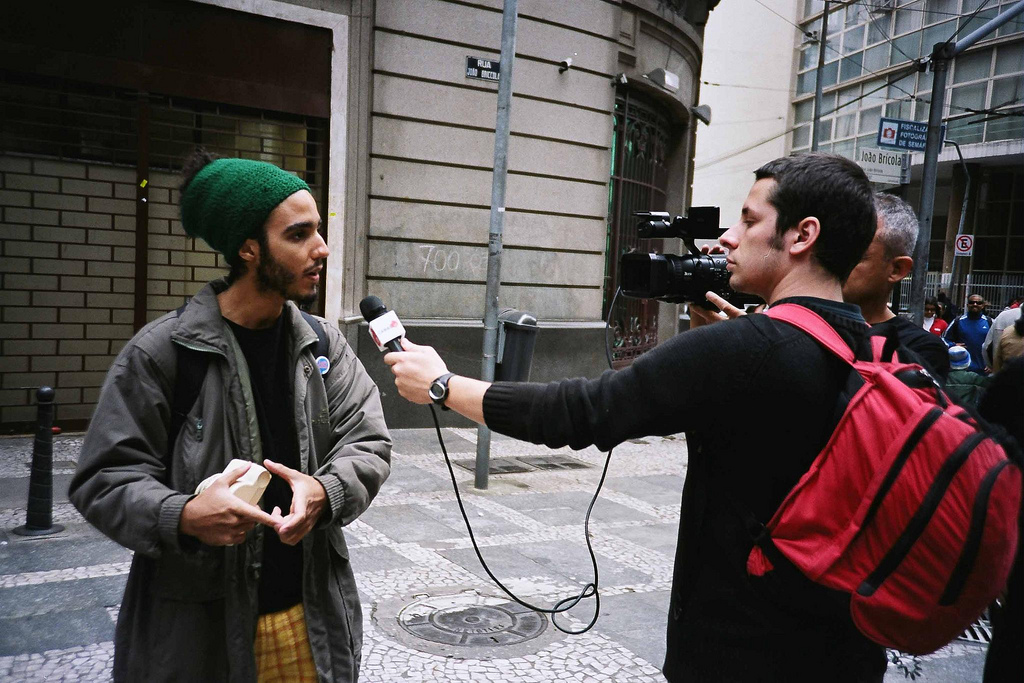Tips for Connecting with Host, the Microphone, and the Camera
- Currently, the average length of a TV news story is 1:20. Most producers prefer a minute or less.
- If you are being interviewed for a TV or radio news story, keep in mind you literally have ten seconds to make your point. Formulate a few statements that fit within that timeframe.
- If you are appearing on a longer format program, review a tape of the program so you can familiarize yourself with the format and the host’s interviewing technique.
- Arrive early. Be friendly and with the crew and with the person interviewing you.
- Use the host’s first name, unless they specify otherwise.
- If you are being interviewed by satellite, make sure the equipment is working. Have the cameraman or sound crew check microphones and earpieces.
- In radio interviews, ask how far to sit from the microphone; then don’t move.
- Beware of an open mic – even when you think it’s off, don’t say anything you wouldn’t say if you were live. You are always “live”.
- Ask where to look at the beginning of the TV interview and then keep looking at that spot. If it is a talk-show format, you will talk to the host – not directly to camera.
- If standing, place one foot slightly in front of the other. If you place them side-to-side, you will rock and it will show on camera.
- Hand movements should be small — it is best to keep them in your lap. If you must gesture, stay within an imaginary box that’s below your chin, no wider than the inside of your arms, and no lower than your rib cage.
- If you are sharing the stage with others, particularly opponents, you need to be assertive. If a question is addressed to the entire panel, jump in – but always be polite and if another panelist is talking, wait until they’re done before you start.
- If on a panel, know the other panelists’ viewpoints and likely arguments. Have sound bites ready to respond to their main points.
Tips on Appearance and Dress

Wear solid colors, not patterns. Photo by Mariano García-Gaspar
- Dress professionally and appropriately for the occasion.
- Never wear white or black for a television interview. Under the intense television lights, white will “glow” and “bleed” creating a distracting and unflattering image. Black, on the other hand, absorbs the light and will wash out your skin color.
- Wear solid colors, not patterns. Closely woven patterns and mixed bright colors will create a strobe or “herringbone” effect on camera.
- If you wear glasses, make sure they are clean. Do not wear photosensitive lenses or sunglasses. Wear a shirt or jacket with lapels, so the mic can attach easily. Avoid lapel badges, pins or other distractions like pens or eyeglasses in outer jacket pockets.
- In studio situations, accept make-up if offered. If none is offered, make sure your make-up is slightly bolder than normal, as television lights tend to wash out flesh tones.
- If the camera is likely to get a full-length view, make sure your socks are pulled up and your skirt is long enough and not hiked up.
- Check your teeth!

Photo: Matthew Kenwrick
Tips on Interviewing
- Lead off with the most compelling fact, especially in a short interview.
- Formulate two to three strong message points, and stick to them. Figure out how to say them in different ways.
- If the interviewer tries to get you off message, perhaps by quoting your opponent’s point of view, bridge back to your message- for example, you can say, “The real issue here is….(your message)”
- Keep your language simple, sentences short, and meaning clear. Ask yourself, what’s the most important point I can make? Focus on that.
- Be a teacher—help others understand your issue. Make sure the audience will understand what you say, and speak in simple, non-technical terms.
- Be economic with your words – say what you have to say and then be quiet. Don’t fill “dead air.” This is an old reporter trick to get you to say something you really shouldn’t.
- Avoid the phrase “No comment.” It’s far better to say something like “We’re still looking into that. I’ll let you know when we take a position.”
- If the interview is on tape (not live), and you stumble or are dissatisfied with a question, say something like “Let me rephrase that.”
- There’s no such thing as “off the record.” If you know something you don’t want made public, don’t tell a reporter – you can’t take anything back.
- Don’t let anyone put words in your mouth. If a reporter asks, “Do you mean to say blah, blah, blah,” then state your message again, in your language.
Things to Remember
- Get to the point
- Stay on message
- Avoid jargon
- Use “real life” examples
Download your own copy of this tipsheet here

Photo: Daniela Goulart
